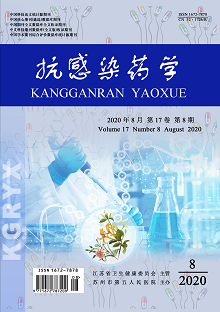LIANG Shao-qun, WU Xing-liu, ZHAO Ming-cong, HE Gang, LUO Ming, WU He-ming, Chen Xiao-hua
Objective: To study the epidemiological characteristics and clinical patterns of Dengue fever patients in Jiangmen, Guangdong province from 2018 to 2019, and to provide an examination for clinical diagnosis, treatment and prevention and control of Dengue fever. Methods: Data of 40 patients with Dengue fever in Jiangmen from 2018 to 2019 were collected to analyze their history, clinical manifestations, diagnosis priorities, treatment effects and prevention and control measures, disease transmission characteristics, distribution rules, clinical diagnosis and treatment points, occurrence of complications, characteristics and management of critically ill patients, prognosis and outcome. Results: There were 40 cases of Dengue fever with an equal proportion of males and females, with 19 cases over 60 years old accounting for 47.50% and 3 cases under 14 years old accounting for 7.50%.Thrombocytopenia was found in 36 cases (90.00%) and leukopenia in 38 cases (95.00%). There were 5 cases of hypotension (12.50%), 1 case of slow heart rate (2.50%) and 32 cases of liver function damage in (80.00%). Among them, 26 cases were from Jiangmen Waihai district (65.00%) and 14 cases were from Jiangmen Xinhui district (35.00%). Conclusion: In Jiangmen area, the prevalence of Dengue fever was mainly in the form of undulation fever. Patients in Jianghai area were mostly accompanied by diarrhea, and patients in Xinhui area were mostly accompanied by vomiting. Most of patients were with severe platelet count abnormality, liver function damage and severe complications, and the results were good after treatment. Anti-mosquito work should be actively conducted as the main prevention and control measures.
